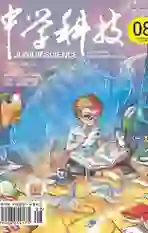Nobel Awarded for Unveiling How Cells Recycle Their Trash
2017-08-09
Healthy cells must do a good bit of housekeeping. If they didnt, they soon would be clogged with old, broken or unneeded materials — what most people would think of as trash. Cells clean out their trash through a process that biologists call autophagy. But how it worked remained a mystery until a Japanese cell biologist did a lot of probing. What he uncovered won him the 2016 Nobel Prize for physiology or medicine.
Cell biologist Yoshinori Ohsumi's work falls into the category of physiology. That's the science of understanding how biological parts work. His studies over the years, most recently at the Tokyo Institute of Technology in Japan, have focused on what happens to cells faced with starvation. Rather than give up and die, cells will begin to cannibalize parts they don't need. Then they'll recycle — eat or otherwise reuse — those unneeded parts.
But starvation is far from the only motivation for this autophagy, Ohsumi showed. Even healthy cells make use of this process to rid themselves of trash.
Too little recycling can cause cellular trash to build up. That can lead to brain disorders, such as Alzheimers and Parkinsons diseases. Scientists have linked excess recycling, in contrast, with cancer.
"It's so exciting that Ohsumi has received the Nobel Prize, which he no question deserved," says Jennifer Lippincott-Schwartz. She's a biologist with the Howard Hughes Medical Institute. She works at its Janelia Research Campus in Ashburn, Va. "The 2016's winner set the framework for an entire new field in cell biology." she says.
Indeed, Ohsumi's discoveries helped reveal the workings of a basic process that underlies biology, notes Maria Masucci. A biologist with the Karolinska Institute, near Stockholm, Sweden, she spoke during a news briefing on October 3. "There is growing hope," she says, "that this knowledge will lead to the development of new strategies for the treatment of many human diseases."
1.Which of the following word can replace starvation in the underlined sentence? ____.
A. recycling B. going hungry
C. serious illness D. elimination
2.When faced with starvation, cells ____.
A. start the procedure of reproduction
B. slow down the rate of autophagy
C. become inactive gradually and die
D. initiate the process of autophagy
3. Too much recycling for cells will lead to ____.
A. brain disorders
B. clogged up trash
C. malignant tumor
D. physiological disease
4. Which of the following statement is TRUE according to the article? ____.
A. Ohsumis study is the first to uncover the mechanism of autophagy
B. Lack of food or material for cells is the only cause of autophagy
C. The process of autophagy is exclusive to healthy cells, while unhealthy ones have a different system
D. Jennifer Lippincott is the coworker of Ohsumi to reveal the mystery of autophagy
